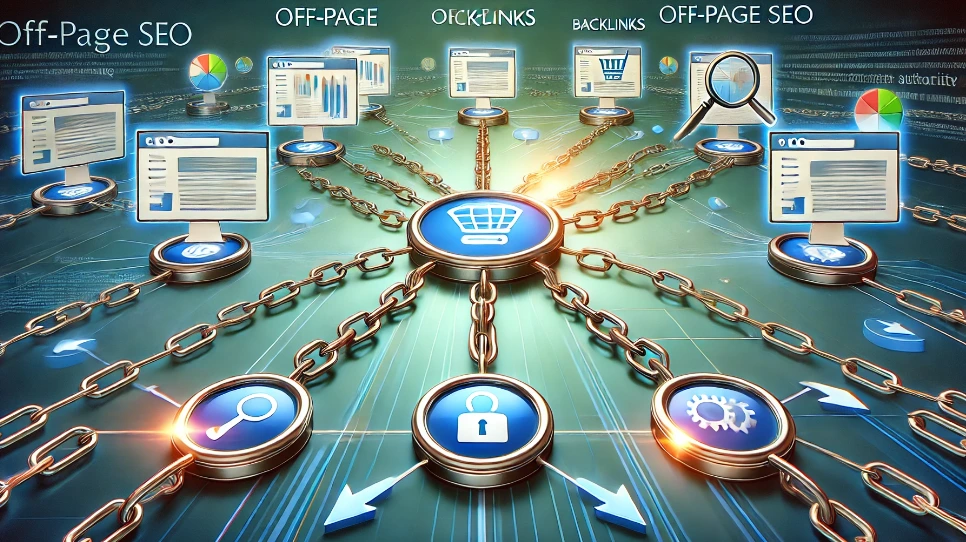Introduction
Hey there! If you run a blog or a website, you’ve probably heard that having a Privacy Policy page is crucial. But why is it so important, and what should it include? Well, if you’re managing Web Seolytics Blog (or any other site for that matter), having a well-crafted Privacy Policy not only builds trust but also keeps you compliant with legal regulations like GDPR, CCPA, and other data protection laws.
Let’s break it down in simple terms—what a Privacy Policy is, why you need one, and how to craft one that aligns with SEO best practices while keeping things crystal clear for your readers.
What is a Privacy Policy, and Why Do You Need It?
A Privacy Policy is a legal document that explains how your website collects, uses, and protects visitors’ data. It’s not just a legal requirement in many regions—it’s also an essential trust factor for your audience.
Imagine visiting a website and realizing they’re collecting your information without telling you how they’ll use it. Feels shady, right? A Privacy Policy ensures transparency and reassures users that their data is handled responsibly.
Key Reasons Why a Privacy Policy is Important:
- Legal Compliance – Laws like GDPR (Europe), CCPA (California), and PDPA (various countries) require websites to disclose how they handle user data.
- User Trust & Transparency – People want to know how their data is used. A clear Privacy Policy builds credibility.
- Third-Party Integrations – If you use tools like Google Analytics, AdSense, or email marketing software, you must disclose it.
- SEO & Online Presence – Search engines value user trust. Having a Privacy Policy can enhance credibility and improve compliance-based ranking factors.
- Prevents Legal Issues – Without a Privacy Policy, you risk fines, lawsuits, or even bans from advertising platforms.
What Should a Privacy Policy Include?
Now that we know why it’s important, let’s get into what to include in a Privacy Policy for Web Seolytics Blog.
1. What Information Do We Collect?
- Name, email, and contact details (if users sign up for newsletters or contact forms)
- IP addresses, cookies, and browsing behavior (through analytics tools)
- Payment details (if you offer paid services)
2. How Do We Use This Information?
- To improve website performance and content
- To send newsletters and marketing updates (with user consent)
- To run analytics and track visitor behavior
- To display targeted ads (if applicable)
3. Do We Share Your Information?
- No, we don’t sell your data.
- However, we may share anonymized data with trusted third-party services like Google Analytics, email providers, or ad networks.
4. Cookies and Tracking Technologies
- Web Seolytics Blog uses cookies to enhance user experience.
- Visitors can disable cookies via browser settings if they prefer not to be tracked.
5. Third-Party Links & Services
- If we link to external websites, we don’t control their privacy policies.
- Users should review third-party privacy terms before sharing their data.
6. Your Rights as a User
- Users can request access, update, or delete their personal information.
- Visitors from GDPR-protected regions can opt out of data collection.
- CCPA-compliant users can request no data selling or tracking.
7. How Do We Protect Your Data?
- We implement SSL encryption, two-factor authentication, and security audits.
- We don’t store sensitive payment details—transactions are handled by secure payment gateways.
8. Updates to This Policy
- We may update our Privacy Policy from time to time.
- Users will be notified of major changes via email or an announcement on our website.
SEO Best Practices for a Privacy Policy Page
Now, let’s talk about optimizing your Privacy Policy for SEO while keeping it readable and user-friendly:
✅ Use clear headings (H2, H3) – This makes the page structured and scannable.
✅ Incorporate relevant keywords naturally – Phrases like “Web Seolytics Blog Privacy Policy,” “user data protection,” and “GDPR compliance” help with search visibility.
✅ Make it mobile-friendly – Many users browse from their phones. Keep paragraphs short and easy to read.
✅ Add an FAQ section – Address common questions users might have about data privacy.
✅ Provide a summary at the top – A quick TL;DR helps impatient users grasp the key points.
Conclusion: Keep Your Users Informed & Protected
A Privacy Policy isn’t just another boring legal page—it’s a critical trust-building tool for Web Seolytics Blog. It reassures users that their data is safe, legally compliant, and used responsibly.
If you haven’t set up a Privacy Policy yet, now is the time! Use this guide as a blueprint to create a clear, SEO-optimized, and user-friendly Privacy Policy that meets both legal and ethical standards.
👉 Need help drafting your Privacy Policy? Drop a comment below or reach out for expert guidance!
